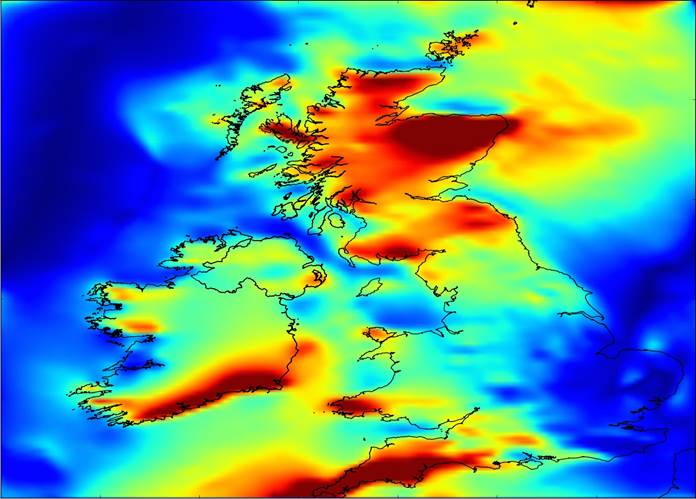Trinity’s Space Weather Warning System Scans Our Skies for Solar Storms
Posted on: 08 July 2015
Physicists from Trinity College Dublin have developed a space weather warning system to help safeguard electricity and communications systems from solar and geomagnetic storms.
On St Patrick’s Day this year, the northern lights danced a lively green jig across the skies of Ireland and Britain. The source of these magnetic storms was not just one but two huge eruptions of electrically charged material from the Sun, which travelled through space at millions of kilometres an hour before colliding with the Earth’s magnetic field. The resulting geomagnetic storms, the strongest for a decade, led to dramatic displays of the northern lights across Ireland and Britain.

British Geological Survey models indicate that unwanted electrical currents may have been induced in our power grids during the storm. Despite this, the Irish and British power grids did not suffer any damage, boosting the prospects for resilience when worse ‘space weather’ events take place.
As far back as 1852, Dublin-born Sir Edward Sabine showed that magnetic storms waxed and waned with the number of spots on the sun. Not long after this, in 1859, Lord Carrington observed a huge solar flare that was followed within a day by brilliant displays of the northern lights in regions as far south as Italy and Cuba.
In addition to brilliant auroral displays, the electric telegraph – the Victorian internet – was disrupted during large geomagnetic storms, and this was duly reported in The Daily News of September 1859.
Nowadays, society is vastly more dependent on technological systems for communications and electricity. These too can be disturbed by magnetic storms – navigation systems can have positing errors, radio transmission can be blacked out, and power grids can become unstable. The most infamous impact occurred in 1989 in Canada, when a magnetic storm interrupted electrical power for more than six million people for nine hours, at a cost of over C$13 billion (€9.3 billion).
For this reason scientists at Trinity and the British Geological Survey were on high alert this St Patrick’s Day as their attention was immediately turned to the potential effects on communications and electrical power systems following an early-warning alert.
“A warning message from our magnetometer network developed by Trinity and the Dublin Institute for Advanced Studies notified me of the onset of a large geomagnetic storm as I watched the St Patrick’s Day parade with my family,” said Associate Professor of Physics at Trinity, Peter Gallagher.
“My research student Sean Blake quickly ran the British Geological Survey’s magnetic storm model to see if there were any threats to the Irish power grid. Despite the storm’s size, no significant effects were predicted or indeed reported.”

A Carrington-sized super storm could pose a threat to the stability of power grids and communication systems, particularly in countries at high latitudes. The Trinity team’s work focuses on understanding how these large storms might impact such technologies and on improving our ability to forecast their occurrence.
Dr Kelly of the British Geological Survey added: “This storm and a more recent one in June were the biggest we have seen in over 10 years. They produced the biggest electrical fields on the ground – and hence currents – we have seen since our system started operation in 2012. Fortunately, the British power grid held up well too, so it gives us more confidence that at least some of our systems are pretty resilient to inclement space weather.”
The St Patrick’s Day storm showed the Trinity team that their alert system works in Ireland and helped BGS scientists gather data on how the storms affected Britain.
PhD Researcher in Physics at Trinity, Sean Blake, said: “We can now monitor and model magnetic storms in near-real time, which allows us to understand the physics of such phenomena and provides a potentially invaluable service to power operators.”
Media Coverage
RTE Radio 1, Morning Ireland, July 7
Ideas, Inventions and Innovations, July 8
